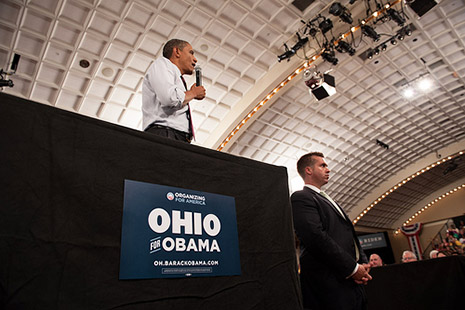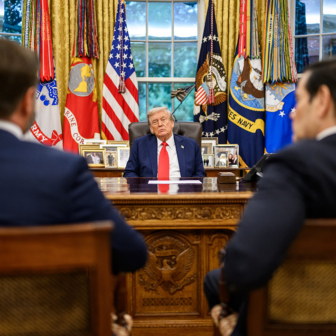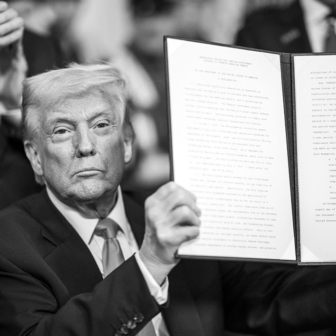THESE are the dog days of August in Washington DC and on the presidential campaign trail. Meteorologically, they arrived early this year; politically, they will linger longer, with Congress not due back until after the political conventions on 10 September.
Congress left town quietly, with little to show for its efforts. It had passed its first transportation bill since 2005, but after all that effort the new legislation provides funding for only two years; and there was a six-month extension of government spending at levels everyone has decried as too high, but at least the bill was passed without drama and two months before deadline. But there is no farm bill; with Republicans badly split over farm subsidies and cutting food stamps, the House leadership could not garner the votes to pass even a stopgap measure.
The House voted over thirty times to dismantle healthcare reform, but the Senate has failed to take up any of these efforts and the Supreme Court has upheld the key aspects of the law. The Senate has narrowly approved legislation that will extend the Bush-era tax cuts for the middle-class but let them lapse for richer Americans. No one is expecting any final Congressional agreement on taxes anytime soon, though, especially as tax bills are supposed to originate in the House, where the likelihood of a bipartisan agreement is remote.
Despite their rousing 2010 election promises, the conservatives and the Tea Party have failed to put their imprimatur on Washington and have been ineffective lawmakers. As a consequence, the nation is now saddled with more debt and voters are more sceptical than when they arrived.
The same stasis is evident in the presidential campaign. With less than one hundred days to go, it’s hard to know what will move this race. The landmark Supreme Court decisions on healthcare and immigration laws, a faltering economy and weak job market, and an unprecedented barrage of negative ads have generated lots of media and political comment but had little or no impact on the polls.
The campaign is certainly not policy-driven at this point, and it’s hard to argue it’s gaffe-driven – although there have been plenty of those. It seems that committed voters have made up their minds, leaving only the votes of the undecided and independents up for grabs.
It is very unusual for the race to be so close this early. But the poll numbers are stubbornly constant, with most polls having Barack Obama leading Mitt Romney by between two and four percentage points. Only twice in thirteen surveys by the Washington Post–ABC News poll over more than a year has either candidate held a lead exceeding the poll’s margin of sampling error. For over a year a majority of Americans have not approved of Obama’s overall job performance; also unchanged are Americans’ attitudes toward government spending and cuts to entitlement programs.
This stability in voter attitudes persists despite a costly blitz of early campaign advertising. Since the start of the presidential campaign, independent groups have spent at least $145 million on television advertisements and other efforts asking voters to elect or defeat candidates. The most active groups have been Super PACs, which raise unlimited money from individuals, corporations and labour unions and then spend unlimited sums to overtly advocate for or against political candidates. To date, 705 groups organised as Super PACs have reported total receipts of $319 million and total independent expenditures of $167 million in the 2012 election cycle, which is almost certain to be the most expensive in history.
This summer there will be no vacation for the presidential candidates and their teams. Labor Day (the first Monday in September) used to mark the beginning of the general election campaign after a summer lull. But now, although the political conventions have been pushed back to late summer, the presidential battles have expanded in time and increased in intensity. More votes are being cast well ahead of polling day under early-voting provisions, and this year jurisdictions are required to send absentee ballots to active-duty military voters by late September. It is estimated that 40 per cent of voters could cast their ballots early, up from 33 per cent in 2008. In 2008, a significant majority of the early ballots favoured Obama.
The focus is now strongly on getting out the vote, especially in the swing states. (In the 2012 presidential election the swing states, also known as battleground states, are generally considered to be Colorado, Florida, Iowa, Nevada, New Hampshire, North Carolina, Ohio, Pennsylvania, Virginia and Wisconsin.) As of May, Democrats had already channelled almost $25 million into these key states. At that time the Republicans had spent only $1 million. A number of Republican governors and Republican-led state legislatures are trying to introduce voter identification requirements and there are concerns that these requirements are less about stopping fraud than about keeping the young, poor and minorities from voting. At least five million voters, predominantly from groups sympathetic to Obama, could be affected by these partisan efforts.
Other key groups in the swing states are Hispanics and college students. Hispanic voters in battleground states are enthusiastic about Obama’s relaxation of immigration laws and opposed to Romney “self-deportation” alternative. It is estimated that there are 12.1 million unregistered, but potentially eligible, Hispanic voters in the battleground states. If only a fraction of these came out to vote they could have a significant impact. For example, the 1.4 million unregistered Hispanic voters in Florida represent a group five times larger than Obama’s margin of victory in that state in 2008.
In 2008, Obama won young voters between the ages of eighteen and twenty-nine by a two-to-one margin over Republican nominee John McCain. A recent Wall Street Journal–NBC News survey found that Obama leads Romney among young people, 60 per cent to 34 per cent, but their enthusiasm for the president has faded since 2008, partly because of high unemployment among recent college graduates. The fact that the president was able to persuade Congress to attach an amendment to the transportation bill to prevent a doubling of interest rates on new student loans will be used by his team as part of a push to improve his ratings with college students.
DESPITE the feeling that the campaign is drifting, new polls in three critical swing states – Ohio, Florida and Pennsylvania – have provided good news for the president. They show Obama leading Romney by statistically significant margins of six or more percentage points among respondents. It is interesting to note that while the national economic picture remains dismal, the economies of the swing states are sunnier. In seven of these states the unemployment rate is below the June national average of 8.2 per cent.
In nine of the past ten elections, the candidate leading in the Gallup Poll taken closest to one hundred days out has won the White House. The exception was 1988, when the hundred-day mark came a week after the Democratic convention had given Michael Dukakis a bump. This year, the Gallup poll shows a tie with both Obama and Romney getting 46 per cent support among registered voters.
But there are other more compelling reasons why Romney’s advisers should learn from Dukakis. He whiled away his summer and a seventeen-point lead as George H.W. Bush developed the brutal assault on his rival that won him the White House. But avoiding that trap and using the next month profitably are two different things. Between now and the Republican convention on 27–30 August, the Romney team must not only vet and choose a vice-presidential candidate but also answer the lingering questions about his wealth and taxes, his career, and his policy proposals. There will undoubtedly be a bounce in the polls for Romney and his running mate around the Republican convention, but it will be quickly diminished when the Democrats hold their convention on 3–6 September.
For now, faced with a media diet of delayed Olympic events interspersed with campaign ads, the pundits have resorted to the usual mid-summer speculation and hype. CNN has been musing about the likelihood of a tied election, with Obama and Romney each netting 269 electoral votes in November instead of the 270 needed to win. In such circumstances the House of Representatives could end up electing the new president – a situation that would set off a tidal wave of constitutional and political mayhem.
If the old adage that most presidential elections end up in November exactly as they looked in summer is to be broken, then both campaign teams will be looking to turn the lazy, hazy, crazy days of summer into attack-dog days. •




